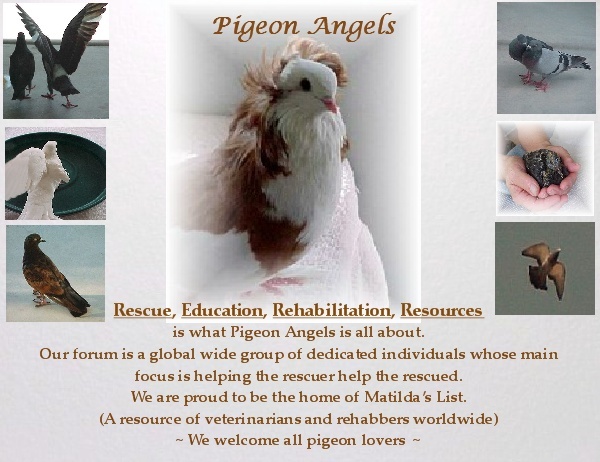http://www.avianbiotech.com/Diseases/Salmonella.htmSalmonella
Description:
Salmonella - Salmonella species are gram negative, aerobic, rod-shaped, zoonotic bacteria that can infect people, birds, reptiles, and other animals. This genus includes approximately 2000 species divided into five subgenera. Of the five subgenera, two subgenera, subgenus I and subgenus III, can be found in birds. Subgenus I contains the species of salmonella that most commonly infect birds. Subgenus III, contains the species Salmonella arizonae and arizona hinshawii, which have occasionally been reported in birds, particularly those that are in contact with, or close proximity to reptiles.
Most vertebrates can be infected with Salmonella however, the host susceptibility and development of carrier states vary widely among species. Free-ranging birds can be sub-clinical carriers and serve as a reservoir of bacteria.
In addition to free-ranging birds, flies, rats, and other vermins may also serve as vectors of Salmonella. The incidence of various Salmonella species seems to vary with geographic location and the types of food consumed. Imported birds and animals may serve to introduce different Salmonella species to the local area that can cause new and devastating outbreaks.
--------------------------------------------------------------------------------
Transmission: Transmission of this organism from one host to another is primarily through the air. The bacteria is shed from an infected bird in the nasal and or ocular secretions, fecal material, and feather dust. The organism remains stable outside the host body and dries as a dusty substance. This dust or aerosol contaminates the air that is then inhaled by another possible host. Susceptibility as well as the amount of contamination determine whether or not the new host becomes infected with the disease. Other forms of transmission include infected hens feeding their young with contaminated crop contents, as well as contaminated feed and drinking water.
Vertical transmission (transmission of the bacteria to and egg) can occur, subsequently chicks hatch and spread salmonella by direct contact. The embryo may die if bacteria levels become to high.
The disease has a greater chance of spreading in overcrowded conditions, stale air environments, nest-boxes, and brooders. Pet shops, bird marts, and quarantine stations are also high risk areas.
--------------------------------------------------------------------------------
Symptoms: General symptoms of Salmonella include lethargy, anorexia, and diarrhea. In chronic cases, arthritis (particularly in pigeons) may be present. With high dose infections excessive thirst, conjunctivitis along with indications of liver, spleen, kidney or heart damage can occur.
Some individual avian species have unique clinical symptoms. Outbreaks in lories (Loriidae) are associated with an acute disease and high flock mortality. African Grey Parrots are also very susceptible, but they develop a more chronic disease showing symptoms such as mucus discharge from the beak/nasal area, arthritis, excessive thirst, and dermatitis. Droppings are colored a sulphur yellowish green which is very much a diagnostic sign for this microorganism.
--------------------------------------------------------------------------------
Prevention: Proper hygiene is the best way to prevent outbreaks of Salmonella. Effective control of flies, rodents and other vermin are also essential eliminate in preventing Salmonella outbreaks. Strains of Salmonella present in companion birds are generally not considered to be of any danger to a healthy human being. They may however, threaten infants, the elderly, or those with immunosuppressive diseases. Humans carrying Salmonella can infect their companion birds. Such human-to-animal interactions have been shown to occur, especially with African Greys, Amazons, Cockatoos and Macaws.
--------------------------------------------------------------------------------
Treatment: Treatment of salmonella infections are more successful if the precise species is first determined. Once the particular species of salmonella has been identified, the appropriate antibiotic can be administered. The frequently found Salmonella strains are sensitive to many commonly available antibiotics, but strains from free ranging birds have varying degrees of resistance.
ANTIBIOTICS:
Kanamycin: Dosage: .01 mgl to one gram of body weight intramuscularly twice daily.
Gentamycin: Dosage: .01 mg to one gram of body weight intramuscularly once daily or 25 mg. to 120 ml of drinking water orally.
Trimethoprim/Sulfamethoxazole Suspension: Dosage .002 ml to one gram of body weight orally twice daily.
Sodium Sulfachiorpridazine Powder: Dosage ¼ tsp to 120 ml drinking water
ANTIDIARRHEALS:
Pepto Bismol: Coats the intestinal tract. Helps to form a firmer stool. Dosage 2-3 drops in the mouth, 3 times daily.
Kaopectate: Daolin and pectin coat the intestinal tract and form a firmer stool. Dosage 3 drops in the mouth 3 times daily.
*Please check with the manufacturer of the specific antibiotic for additional information before treatment is started. Allays consult with your local avian veterinarian for additional information before treating individuals.
--------------------------------------------------------------------------------
Diagnosis: A confirmed diagnosis requires isolation and identification of the Salmonella species. Most strains of Salmonella are motile, or capable of moving spontaneously, and grow on common media. However these assays provide a low degree of identity. PCR and sequence assays are also available, and results of these assays proved more precise information as to the type of Salmonella strain involved.
--------------------------------------------------------------------------------
Sample: Samples from suspected birds are collected with cloacal swabs. Any mucus discharge from the eyes and nasal area should also be collected on a second swab. Swabs must be sterile and transported in a correct medium.
Environmental swabs can also be submitted to help evaluate the environment.
--------------------------------------------------------------------------------
Handling: Prior to shipping samples should be stored at 4 C. Samples must be shipped overnight in a transport medium.
--------------------------------------------------------------------------------
Limitations:
--------------------------------------------------------------------------------
References:
HOME - DNA SEXING - DISEASE TESTING - RESULTS - PRICING - FAQ - LINKS
FREE COLLECTION KITS - DOWNLOAD FORMS - AVIAN CONNECTION - Member Login
Avian Biotech International
1336 Timberlane Road · Tallahassee, FL 32312-1766
850-386-1145 or 800-514-9672 (Office) 850-386-1146 (Fax)
Copyright

1995-2009 Animal Genetics, Inc. All rights reserved.
Avian Biotech and Avian Connection are

of Animal Genetics, Inc.


